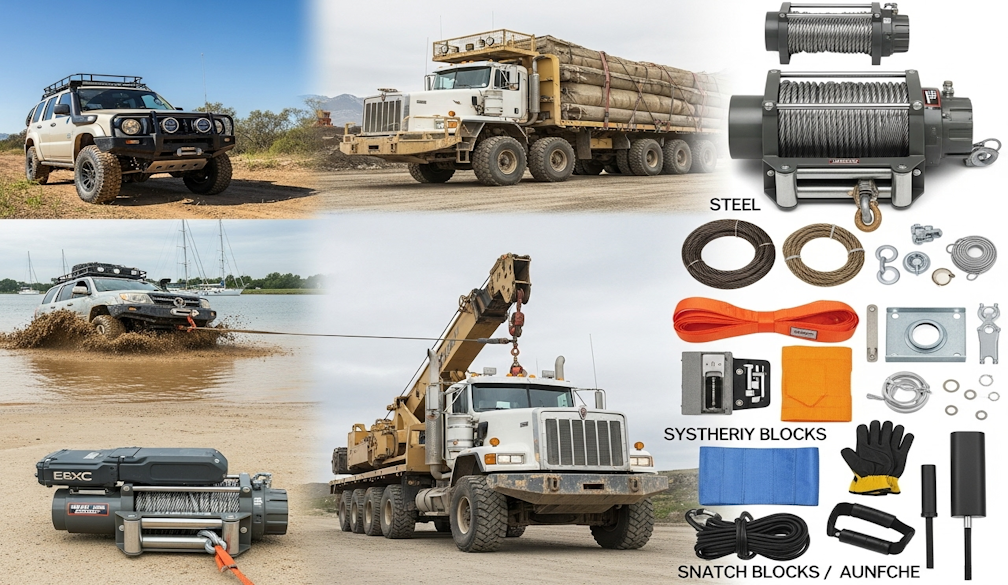How to Choose the Right Winch for Your Vehicle or Equipment

When it comes to recovery, lifting, or heavy-duty hauling, having the right winch is essential. Whether you’re using it on a 4WD, a truck, or industrial equipment, a winch provides the pulling power needed to get the job done safely and efficiently. With so many options available, selecting the right winch can feel overwhelming. This guide will walk you through the key factors to consider so you can make an informed decision.
If you’re not looking to purchase outright, exploring options for winch hire in Australia can be a cost-effective and practical solution for short-term or project-based needs.
Understand Your Requirements
The first step is to clearly define what you’ll be using the winch for. A winch designed for occasional recreational use will differ greatly from one required for industrial applications. Ask yourself:
- Will it be mounted on a vehicle, trailer, or used as standalone equipment?
- What is the typical load weight you need to pull or lift?
- Will it be used in off-road conditions, construction, marine environments, or another setting?
By clarifying the purpose, you’ll quickly narrow down the most suitable types and specifications.
Consider Winch Capacity
Winch capacity refers to the maximum load it can safely handle. As a rule of thumb, your winch should have a pulling capacity of at least 1.5 times the gross weight of the vehicle or equipment it will be working with. For example, if your 4WD weighs 2,000 kilograms, you’ll want a winch rated for at least 3,000 kilograms. Overestimating capacity is always safer than underestimating, particularly if you’ll be working in challenging environments such as mud, sand, or steep inclines.
Electric vs Hydraulic Winches
Two of the most common winch types are electric and hydraulic:
- Electric winches are powered by the vehicle’s battery and are popular for 4WDs and light-duty use. They’re relatively easy to install and operate but can be limited by battery life.
- Hydraulic winches are powered by a vehicle’s power steering pump or external hydraulic system. They’re highly durable and capable of continuous use, making them ideal for heavy-duty industrial or marine applications.
The right choice will depend on whether you prioritise convenience or long-term endurance under heavy loads.
Rope Options: Steel Cable vs Synthetic Rope
The rope or line material is another important consideration:
- Steel cable is strong, durable, and resistant to abrasion, making it a reliable choice for demanding tasks. However, it’s heavier and requires gloves to handle safely.
- Synthetic rope is lighter, easier to handle, and safer if it snaps under tension, but it does require more care to avoid wear from UV exposure or sharp edges.
Choose based on your environment and how often you expect to use the winch.
Safety and Accessories
Beyond the winch itself, consider the accessories that will make operation safer and more efficient. Recovery straps, snatch blocks, gloves, and dampeners are essential additions to a complete winching kit. Also, ensure the winch is installed correctly—either by a professional or by following manufacturer guidelines—so it operates safely and reliably.
Ready to get started?
Choosing the right winch comes down to understanding your requirements, calculating the correct capacity, and selecting a type and rope material that suits your application. By taking the time to assess your needs carefully, you’ll ensure your winch is not only fit for purpose but also a reliable partner in challenging conditions.



